Cancer is a condition where your body’s cells grow uncontrollably and cause a tumor. The cancer can then spread to other areas.
You can get cancer anywhere, but there are a few body parts that are susceptible. The skin, your largest organ, is one of those places.
Be on the lookout for any of these risk factors: fair skin, history of sunburns or excessive sun exposure, living in sunny or high-altitude climates, lots of moles, precancerous lesions, family or personal history of skin cancer, weakened immune system, exposure to radiation or substances like arsenic.
There are three different types of skin cancer – basal cell, squamous cell, and melanoma. Each type looks a bit different from the others.
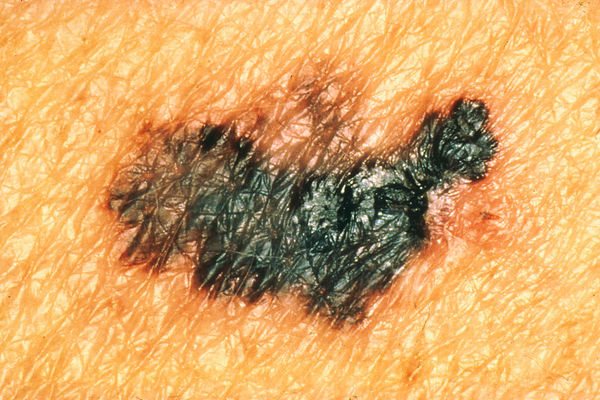
Advertisements
10. Rough, Scaly Patches

Keep a look out (and feel for) for rough, scaly patches that may range from brown to dark pink. You will often find them on a fair skinned person with a history of sun damage.
These will often appear on the face, head and hands. These rough patches are called actinic keratoses and are precancerous skin lesions.
If you aren’t certain, ask a doctor and then keep an eye on the area for any changes.
9. Pearly or Waxy Bump
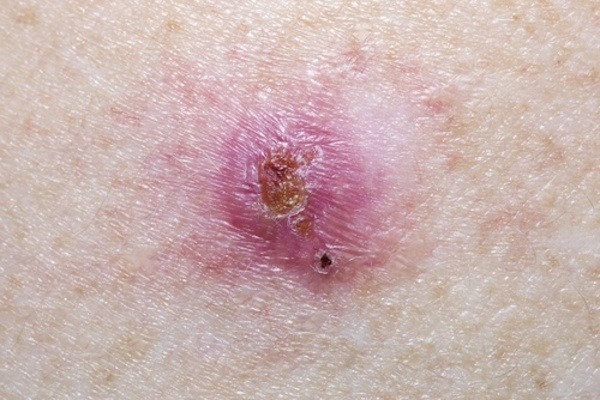
A pimple the doesn’t come to a head or changes sizes, keep an eye on it. If you develop a waxy bump under the skin or a bump has a sunken center, have a professional take a look at it.
A waxy or pale bump can be a basal cell carcinoma.
You may also see irregular blood vessels growing near the surface of the skin or have a tendency to bleed easily.
8. Flat, Flesh-Colored or Brown Scar-Like Lesion

If you have a sore that won’t heal, has a sunken center or bleeds easily, have a doctor take a look at it. There are several reasons for scabs that won’t heal.
One of them is a basal cell carcinoma. This type of cancer is commonly found on the head, face, neck, hands and arms. It generally not aggressive and is easily treated.
Basal cell carcinomas can be disfiguring or leave behind scars, so treat early for best success.
7. Firm, Red Lesions

If you see a firm, dull red lesion that develops a sunken center or ulcerates, see a doctor. An ulcerated area might growth another ring of tissue inside the original area or develop as a crusty patch in a different color or refuse to heal.
It may look like a pimple or boil but won’t go away. These are most likely on the face, ears and hands.
Darker skinned people may develop lesions on areas not exposed to the sun.
6. Flat Lesion with a Scaly, Crusted Surface
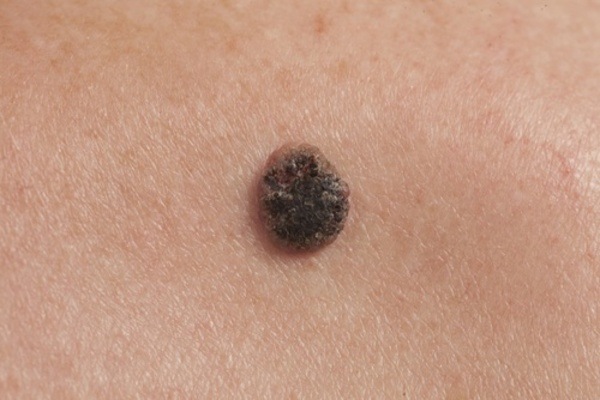
Flat lesions that develop a scaly surface or refuse to heal, like the previous lesions, may be squamous cell carcinomas.
These types of cancers can occur on the skin or even in the respiratory tract, GI tract, and hollow organs. They are not generally deadly but may become so. They can be disfiguring or cause scars, so treat early.
Advertisements
Squamous cell carcinoma is on the rise due to excessive use of tanning beds or excessive sun exposure.
5. Weird Moles
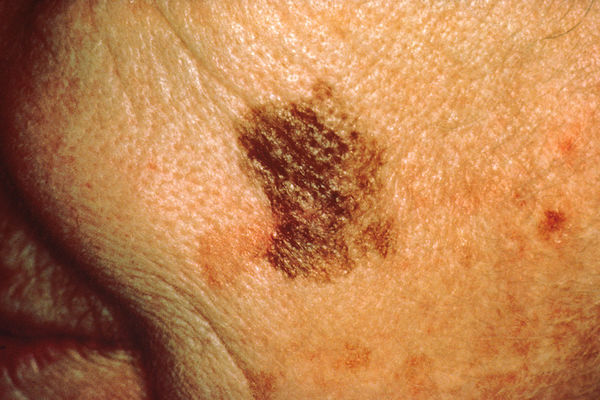
Keep an eye on moles. If one develops as a dark brown spot with darker speckles or an existing mole changes color, size, feel or bleeds, see a doctor immediately.
Changing moles may be a sign of melanoma. Melanoma is an aggressive and deadly cancer. Melanoma risk is a combination of genetics, UV caused mutations, and unknown factors.
Always check your moles for
- A (asymmetry)
- B (border irregularity)
- C (color multiplicity)
- D (diameter greater than ¼ inch)
- E (evolution or change in size and/or shape)
4. Lesion with Irregular Borders Colored Red, White, Blue or Blue-Black
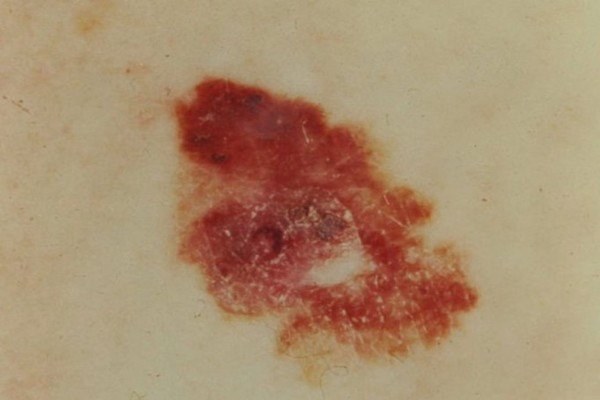
Melanoma may develop in odd places. Pay attention to palms, soles, fingertips or toes, or inside your mouth, nose, or around the vagina or anus.
Any odd-looking dark spot, especially if it appears suddenly, is an odd color, or hurts, should be checked out.
One person an hour dies of melanoma. If you aren’t certain, have the spot looked at. You may be overreacting, but you may not, and your life depends on early detection!
3. Hard, Yellowish Lumps on Eyelids

If you suddenly develop a hard yellow lump on your eyelid, have it checked out. These lumps may also appear on the head or neck, trunk, or genital area. These hard lumps can be a rare cancer, sebaceous gland carcinoma. They are slow growing and not particularly aggressive, however treating them is important!
These can be a clue that there is cancer elsewhere in the body (Muir Torré syndrome). They may also be benign (non-cancerous) and merely annoying.
2. Flesh-Colored or Bluish-Red Nodule

If you notice a red, blue or purple, or flesh colored bump that looks like a small boil or has a sunken center, see your doctor.
Merkel cell carcinoma is rare, but can be found on the face, head or neck. These are most commonly found in older people with a history of excessive sun exposure or a weakened immune system.
Merkel cell carcinoma is fast growing and will spread readily. Catching it early is helpful to the treatment.
1. Red or Purple Patches on the Skin
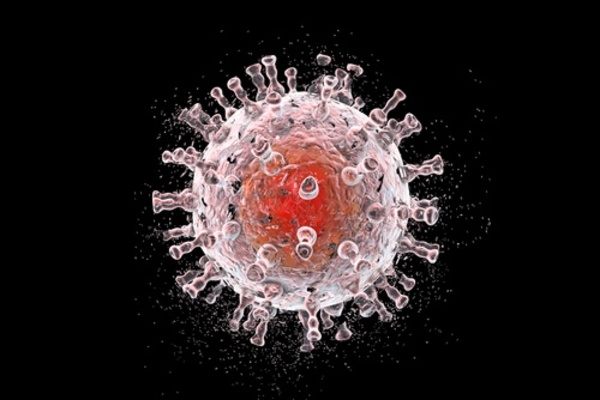
Red or purple raised patches can be a sign of Kaposi sarcoma. This skin cancer is very rare and generally occurs in people with AIDS or organ recipients.
It is sometimes found in young men living in Africa or older men of Italian or Eastern European Jewish ancestry.
Kaposi sarcoma develops in the skin’s blood vessels and creates painless lesions or tumors, most commonly on the face or legs. Tumors on the legs or groin may make the legs swell painfully.
Conclusion

Advertisements
Cancer is scary and skin cancer is the most common cancer. Certain types can be very aggressive and deadly.
Check your body regularly to look for changing moles, scaly skin or odd-looking lumps. If caught early enough, most of these skin cancers can be treated successfully.
Stay out of the sun without proper protection, wear sunglasses, and avoid tanning booths. The fewer sunburns (and tans) that you have, the lower the risk of skin cancer.
Most skin cancers have their roots in sun damaged skin. However, there are other factors, so make sure you pay attention to your largest organ.





Comments